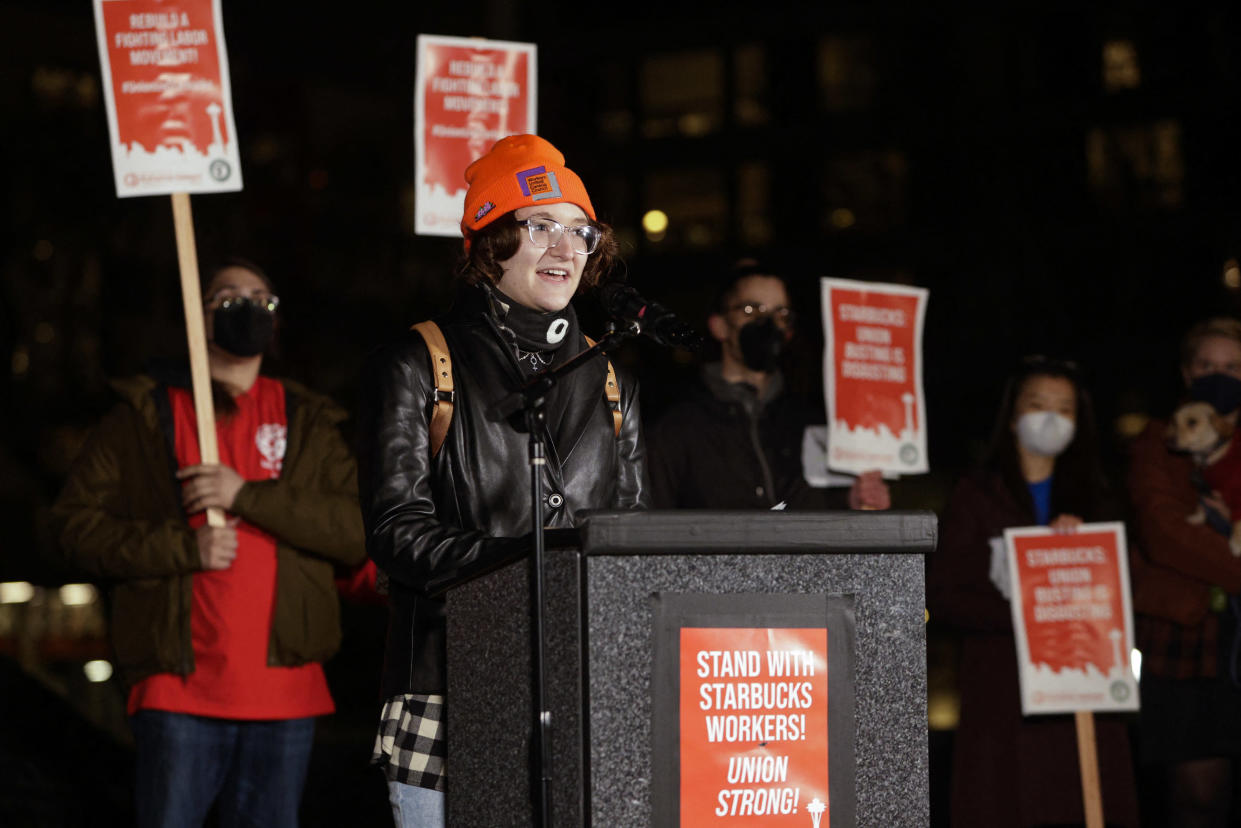Starbucks earnings hit by inflation, rising worker costs and damp China sales [Video]
Starbucks (SBUX) posted mixed first-fiscal quarter earnings results compared to Wall Street estimates, as soaring inflation, higher worker costs and the impact of the Omicron variant took a toll on the restaurant industry at large — and the coffee giant in particular.
Here’s what the Seattle-based company reported, compared to Wall Street estimates, according to a Bloomberg consensus estimates:
The rapid spread of the Omicron variant of COVID-19, spiking inflation and a labor market defined by a lack of workers and rising pay took the largest chunk out of Starbucks’ results.
“We experienced higher-than-expected inflationary pressures, increased costs due to Omicron and a tight labor market,” president and CEO Kevin Johnson said in the release. “We remain focused on actions that drive both top and bottom line growth, including industry-leading investments to attract, train and retain the best talent for our stores as customer occasions increase.”
The company’s North America segment’s operating income operating margin of 18.9% expanded from 17.2% in the prior year, “primarily driven by sales leverage from business recovery, the impact of pricing, lower restructuring expenses primarily associated with the North America Trade Area Transformation, sourcing savings and the benefits of the closure of under-performing stores.”
Comparable sales in the U.S. jumped by 18%, primarily driven by a 12% gain in transactions and a 6% increase in the average ticket size. In China, the company surpassed 5,500 stores, pushing its global store count to 34,317 in total.
However, the zero COVID-policy in the world’s second largest economy took a toll. Comparable store sales tumbled by 14%, driven by a 9% decline in average ticket and a 6% decline in transactions.
Starbucks customers continue to flock to the long-time rewards app, which it launched in 2008. Rewards loyalty program 90-day active members increased to 26.4 million in the fiscal first quarter, up 21 percent compared to a year ago. This quarter the company unveiled its new store concept to customers n New York City, the Starbucks Pickup, located at 59th Street between Park & Lexington Avenue. The retail experience uses Starbucks order ahead feature on the Starbucks app and Amazon Go’s Just Walk Out technology to create a touch-less experience as customers worry about the potential spread of COVID-19.
Unionization efforts widen

Amid widening support for labor organizing nationwide, a push for Starbucks unions has spread to 54 stores in 19 states after the first U.S. corporate store in Buffalo, New York voted to create the coffee giant’s first ever union back in December. The company has publicly resisted the efforts, but vowed to work to address worker concerns.
In October, the company boosted its U.S. hourly wage to $15 per an hour, up from the $12 dollars an hour rate then. This announcement meant that the average pay for all Starbucks’ U.S. hourly partners is nearly $17 per an hour, with average hourly rates ranging between $15 to $23.
“Unions bring opportunities for people in this country they otherwise wouldn’t have,” Labor Secretary Marty Walsh told Yahoo Finance Editor-in-Chief Andy Serwer in a recent interview, citing “the power of collective bargaining, the power of fighting for raising their wages, the power of pensions, the power of other kind of pension plans, 401(k)s.”
He added: “So I think that there’s opportunities here for us to rebuild the middle class by that.”

According to foot traffic data intelligence company Placer.ai, coffee on-the-go has proven to be a “necessity” based on customers’ visits to major coffee chains during the COVID-19 pandemic. For Starbucks in particular, seasonal menus attributed to a “significant increase” in visits with its seasonal additions like the new sugar cookie latte and its coveted red cup season.
In 2021, visits increased by 7.0% in October, 13.2% in November and 9.8% in December compared to 2019, according to Placer.ai. From October to December, Starbucks told Yahoo Finance it anticipated a whopping $3 billion dollars expected to be loaded onto Starbucks cards as shoppers looked for last minute gifts.
Shares of Starbucks are up 1.5% compared to a year ago. Meanwhile year-to-date shares are down nearly 16 percent.
Brooke DiPalma is a producer and reporter for Yahoo Finance. Follow her on Twitter at @BrookeDiPalma or email her at [email protected].
Read the latest financial and business news from Yahoo Finance.
Follow Yahoo Finance on Twitter, Facebook, Instagram, Flipboard, LinkedIn, YouTube, and reddit.




.jpeg?width=682&height=455&name=AdobeStock_295048993%20(1).jpeg)

